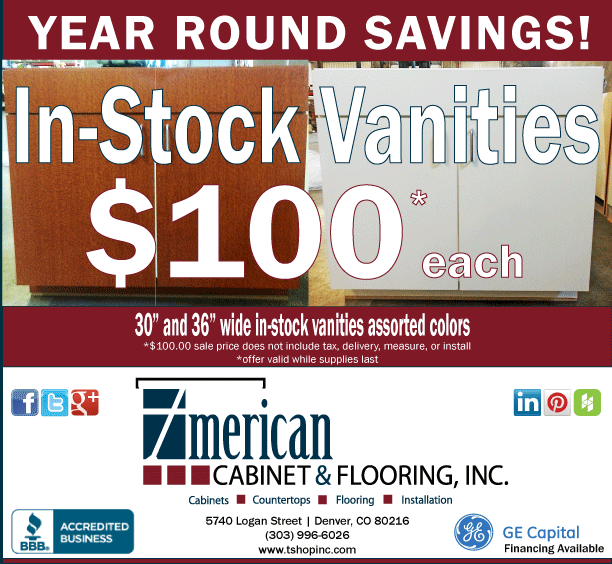10 Smart Organizing Ideas That Make Life Easier
 Tuesday, September 18, 2012 at 12:00PM
Tuesday, September 18, 2012 at 12:00PM Go beyond mere neatness by making small changes around the house that will help you out each day. When your home is primed to efficiently support common activities and tasks - from dealing with mail, bills, and memorabilia, to gifting, cleaning and more - it's as if a little weight is lifted from your shoulders.
 Photo: Stagetecture
Photo: Stagetecture
Read on for ten easy (yet ingenious) organizing ideas to try today.
#1 Buy enough storage containers to fill your shelves or cabinet - even if you don't need them all now
Having storage boxes and bins waiting for you will help avoid future clutter pileups. This is especially useful for storage of items you know you'll be accumulating: photos, kid's artwork, and financial records, for instance.
If you have children, consider purchasing slim plastic containers with lids that fit under a bed, and/or paper art portfolios. Limit yourself to filling one container per school year, but supplement with digital photos of large or 3D artwork that would be impractical to save.
#2 Store medicines in a labeled box in the kitchen
The medicine cabinet is actually one of the worst places to store medications. The warm, damp conditions can damage sensitive ingredients, and the bottles and tubes tend to clutter up what should ideally be a spot for getting ready in the morning.
Instead, transfer your medicines and first-aid supplies to labeled storage boxes with lids and keep them on a high shelf in the kitchen or pantry. Sort them in a way that makes sense, and label accordingly. For example: kids, first aid, cold & flu.
#3 Be prepared for birthdays and last-minute events with a grab-and-go party prep spot
Keep a yearly birthday calendar taped to the inside of the door, a basket filled with easy gifts bought in bulk (and an assortment of cards), as well as a few favorite party drinks, snacks and serving dishes.
Extra credit: choose a "signature" gift wrap and ribbon for your house and wrap all your gifts with it, no matter the occasion. People will begin to expect it, and it will certainly save you the hassle of buying themed gift wrap for every holiday and occasion.
#4 Make a moveable baking station
Unless you bake constantly (or have a massive kitchen), it's likely you, too, struggle with where to keep all of those specialty baking supplies. Instead of scattering them throughout the kitchen, keep baking supplies (including equipment like mixers) on a moveable cart in the pantry. Simply wheel the whole thing out when you're ready to bake, and tuck it out of sight when you're done.
#5 Store extra liners in the bottom of the trash can
The next time you take out the trash, put a big stack of liners at the bottom of the can. Do this for every trash can in the house, and you will never find yourself in that awful "who forgot to put in the new bag!?" situation again. Bonus: putting a dryer sheet under the pile will help absorb odors and moisture.
#6 Keep a "donations" box in your entryway
Any time you see something around the house you no longer need or want, plunk it in your donations box. When it's full, carry it out to your car, so it will be easy to drop the contents at your local charity thrift shop the next time you run errands.
#7 Keep everything you need to pay bills under your coffee table
Stock a pretty basket or lidded box with checks, envelopes, stamps, pens, and current bills. When you sit down to watch TV, just grab the basket and write checks during the commercial breaks.
#8 Keep a second set of basic cleaning supplies in the bathroom
It is so much easier to tackle an undesirable chore like cleaning the bathroom when the supplies you need are at hand. So why do most of us keep cleaning supplies only under the kitchen sink? Store a second set of bathroom-specific products and tools in the cabinet under the bathroom sink, or in a lidded basket on a shelf or the floor.
#9 Presort your incoming mail rather than putting it all in one big tray or pile
Magazines, catalogs and other things you'd like to peruse get stashed in a magazine file; bills to pay go in you bill basket; personal correspondence goes in a toast rack or on a pretty tray; notices for upcoming events and items to file can go in another magazine file or a folder.
#10 Use photos as labels
Try snapping a pic of the contents of a box before storing it in the garage or basement, then use that photo to label the outside. A quick glance at the photo and you'll instantly know what's inside.
 Bathroom,
Bathroom,  Cabinet,
Cabinet,  Home Improvement,
Home Improvement,  Kitchen,
Kitchen,  Organization,
Organization,  Pantry,
Pantry,  Storage in
Storage in  For the Home
For the Home 

























